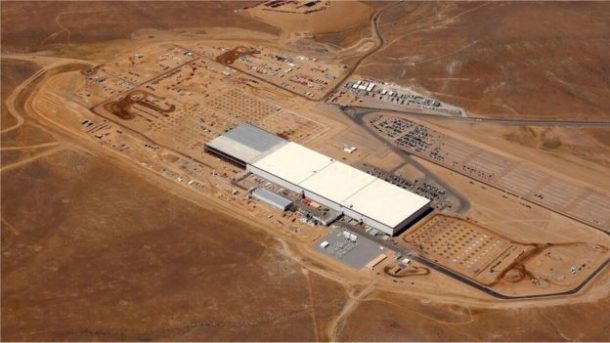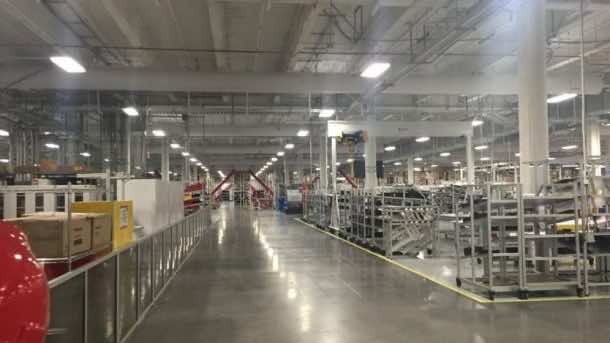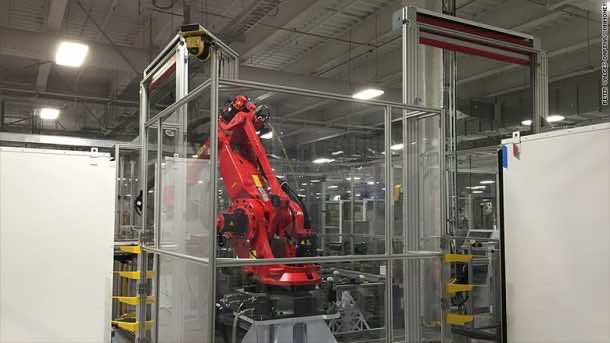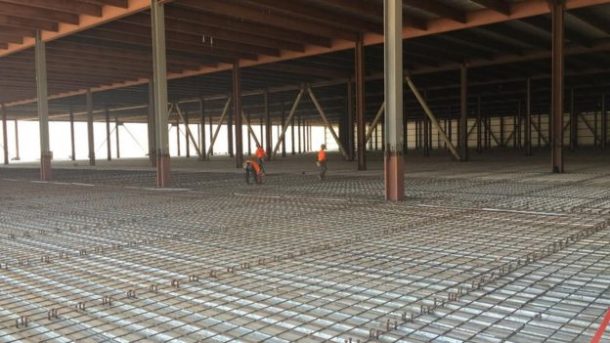About half an hour drive from Reno, Nevada, more than a thousand workers are busy building a 3200 acres, battery manufacturing factory that is expected to be operational by 2020. This building, on its completion, will become the largest building in terms of its physical footprint. Yes, we are talking about Tesla’s Gigafactory, that will produce enough lithium ion batteries to propel Tesla’s electric cars into the spotlight for mass usage.
Tesla is of the view that the main obstacle in the acceptance of electric vehicle by customers are the expensive lithium batteries. So a plant that can significantly boost battery production, is expected to reduce their cost by more than 30%. Once the plant is fully operational, Tesla expects to produce more batteries at this one plant than were produced in all the factories in the entire world.

“I think the Gigafactory has to be the most exciting factory in the world,” Elon Musk, Tesla CEO, said of the project.
Currently at the Gigafactory, Tesla is just assembling the battery packs for storage products in homes and industries. The batteries are made in Japan, assembled at Gigafactory and then sent to Tesla’s Powerpack and Powerwall products.
By the end of 2016, Tesla with its battery partner Panasonic, aims to make the actual battery cells at this new facility. Both will operate parts of the factory with Panasonic building the battery cells and Tesla assembling and packing the cells. The building however, is owned by Tesla and is even being built by the company itself instead of hiring an outside contractor.

This new plant is deliberately located at just a 5-hour drive from Tesla’s Fremont factory in California. After being assembled at the Gigafactory, the battery packs will be transported to Fremont factory to be fitted into Tesla’s recent Model 3 sedans.
Low cost of batteries means lowered cost of the Model 3 cars to about $35,000 base price which is relatively affordable. By 2020, Tesla expects to produce enough batteries that power 1.5 million cars per year.

From the inside, the Gigafactory is braced with multiple layers of strong, earthquake resistant structures. The facility is built as a series of different structures (additional safety measure for earthquakes) it will eventually look like a congruous, giant diamond. Despite being four stories tall, the building only has 2 or 3 floors, allowing space for taller machines to operate properly.

Although it appears so, but Gigafactory is not some extravagant vanity project. It is a futuristic vision of making batteries faster minus the need of dragging parts from one side of the Pacific Ocean to another. If this vision materializes, it will be 100% sustainable and be able to produce cheaper electric cars and other energy-storage devices that could make a global impact. It could also bring about 10,000 new jobs for the people!
No other company hailing from Silicon Valley is claiming that. It is Musk’s visionary thinking that lures in the investment he needs for his big projects. Musk said he has an emotional attachment to the ginormous factory.
“I think it’s quite romantic, actually,” he said.
After completion, the Gigafactory will be shaped like a giant diamond with its vertex pointing towards north. Watch inside the Gigafactory in the video below:
Gigafactory Numbers:
- $5 billion is the estimated cost.
- Factory covers an area of 3,200 acres of land.
- After completion, it will have 5.8 million sq ft space. Currently, it has 1.9 million sq ft of space which means it is only 14% complete.
- 1,000 construction workers are working at present and this project is expected to be completed by 2018 now, two years ahead of 2020.
- By 2018, it is hoped to produce 35GWh of battery power which is more than even the combined global production of batteries in 2014.
Watch what different innovations are being brought by Elon Musk’s Gigafactory in this video:


